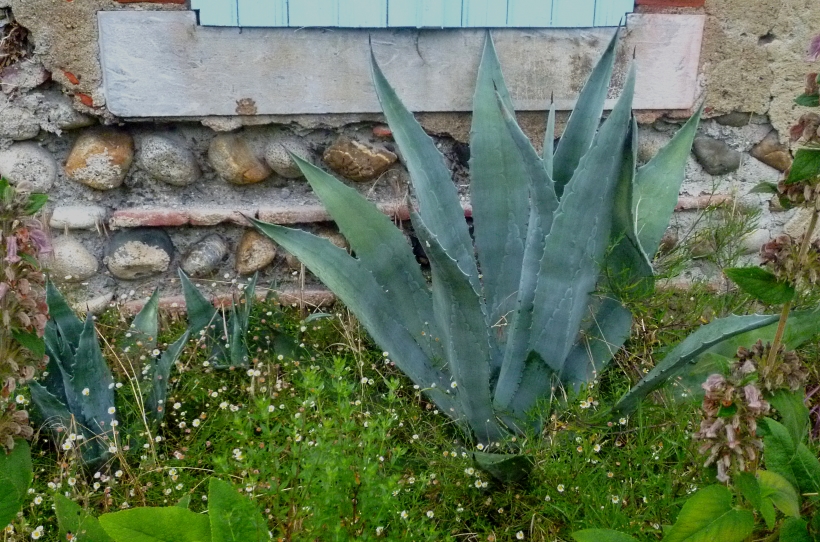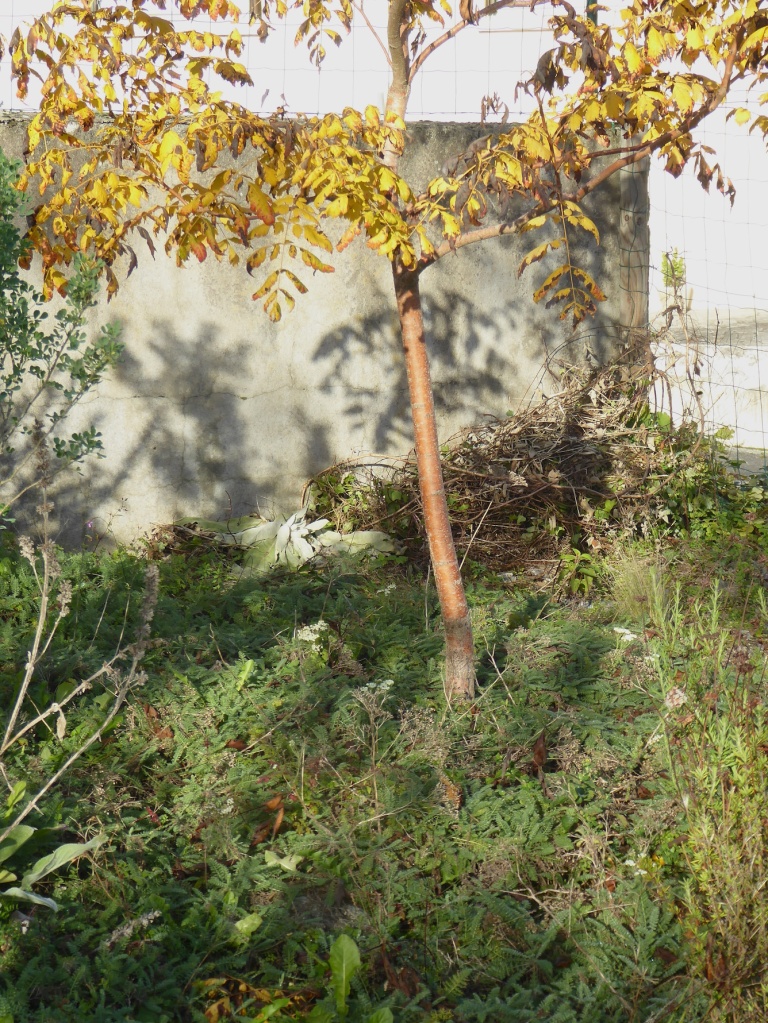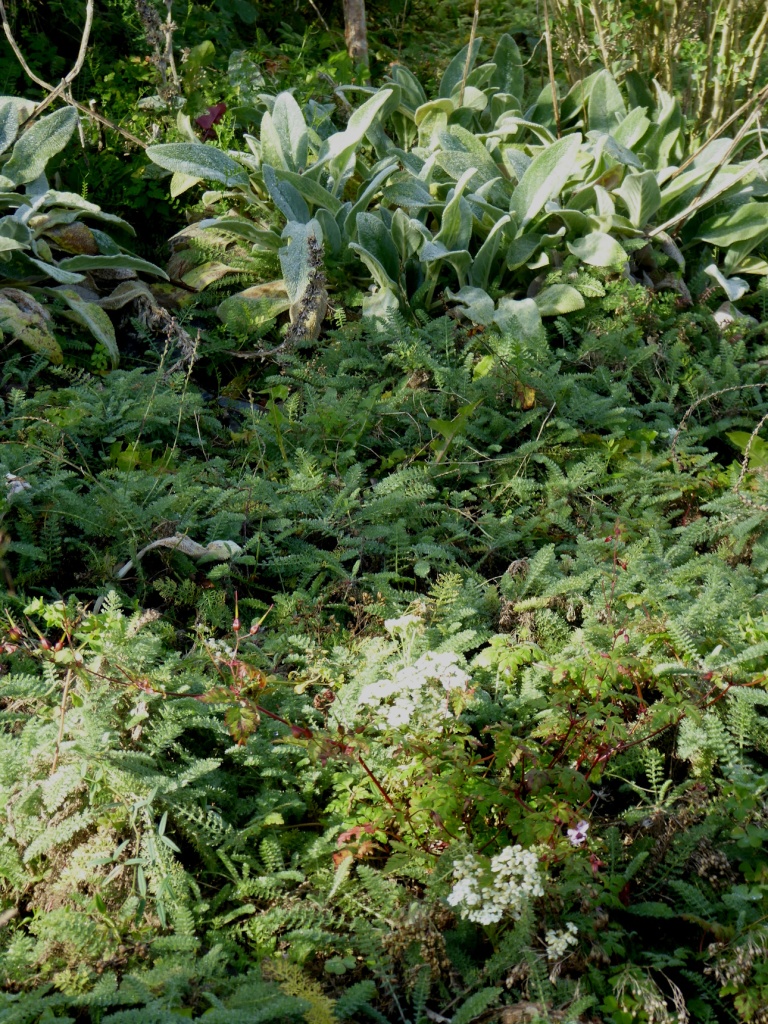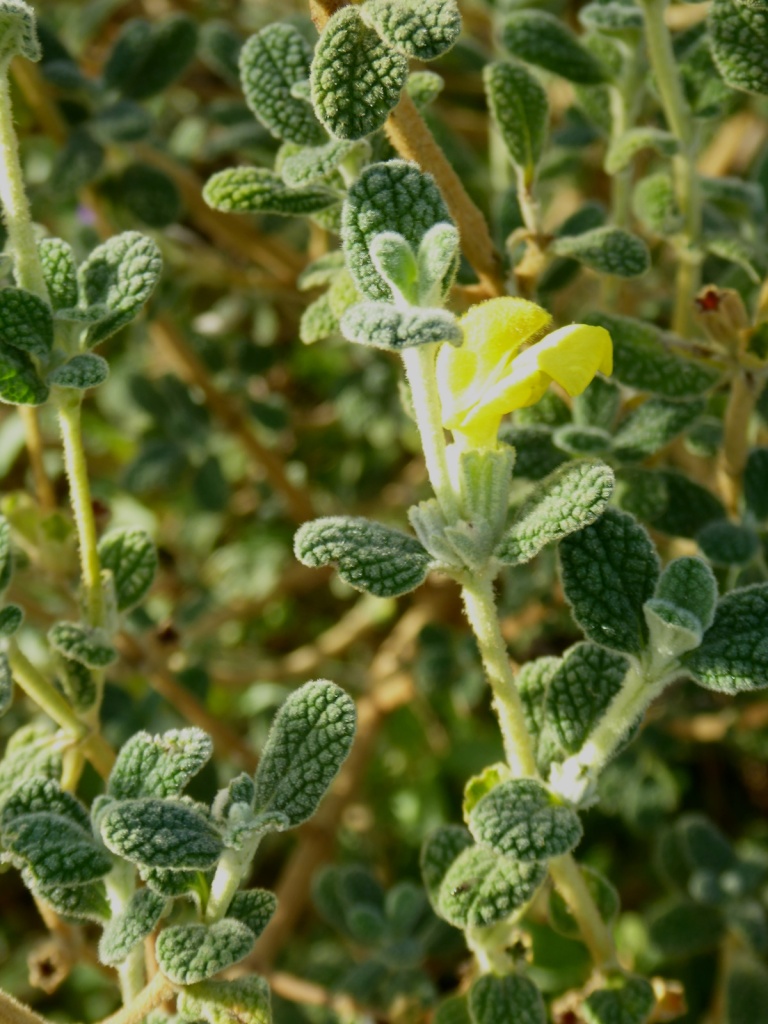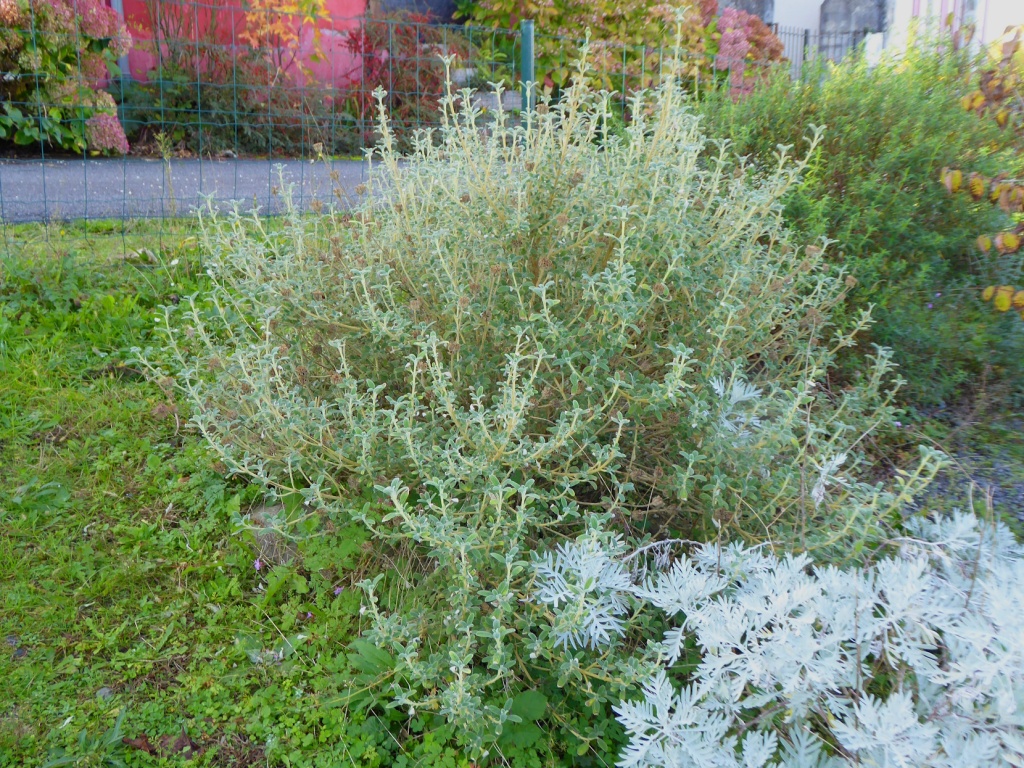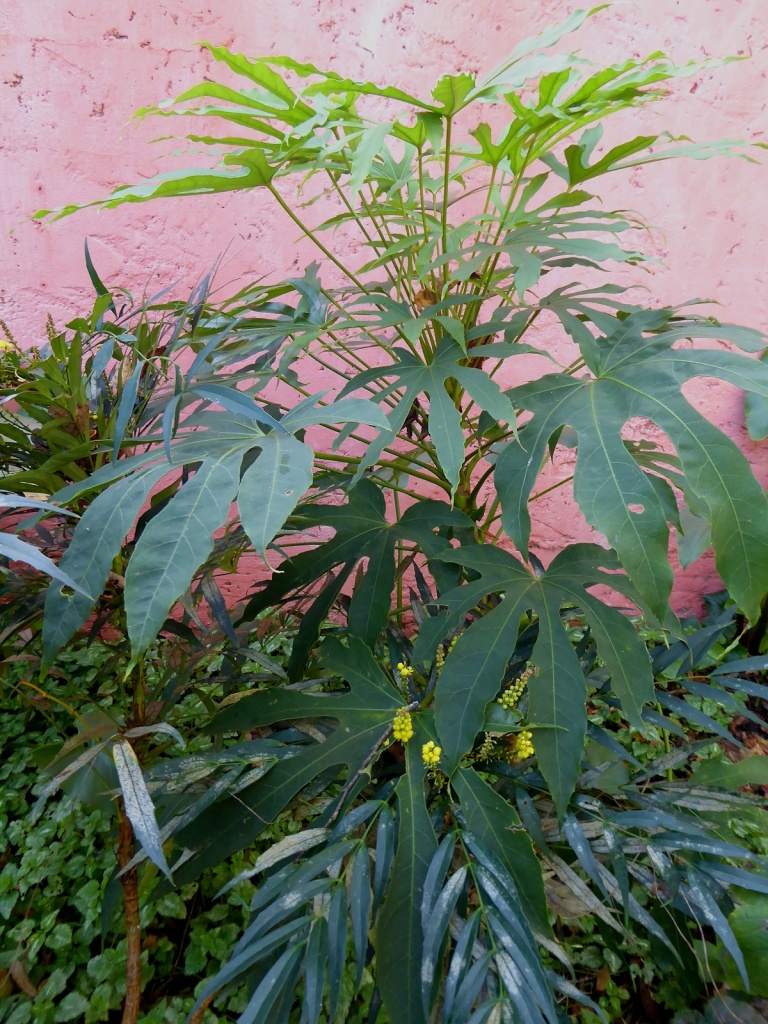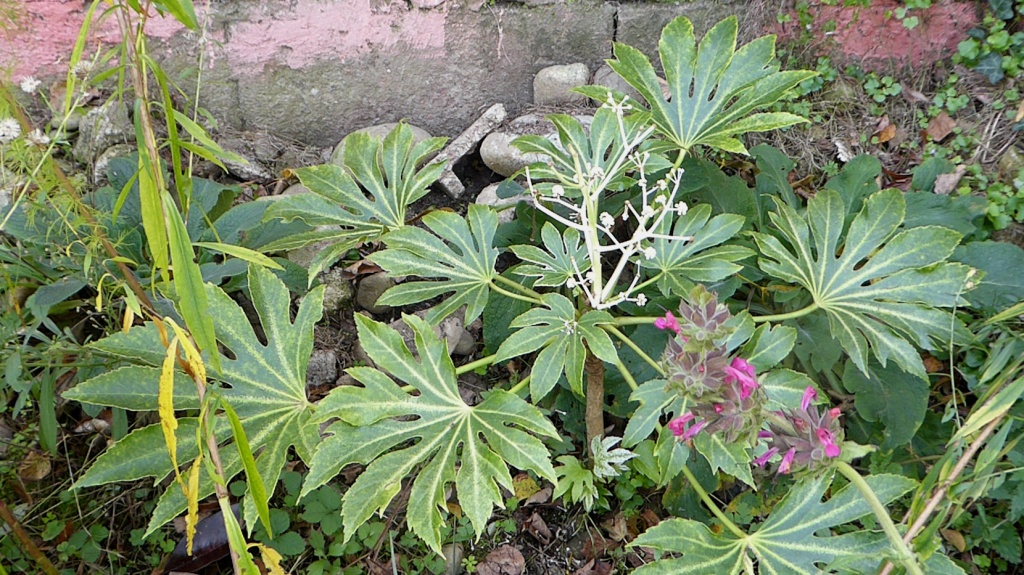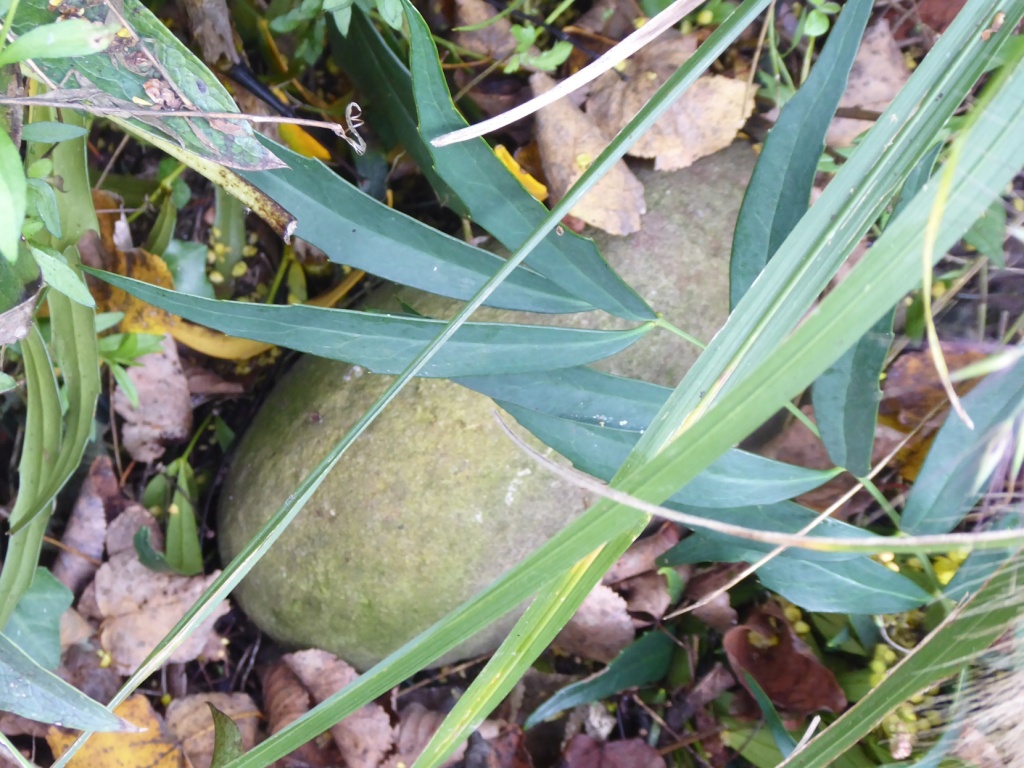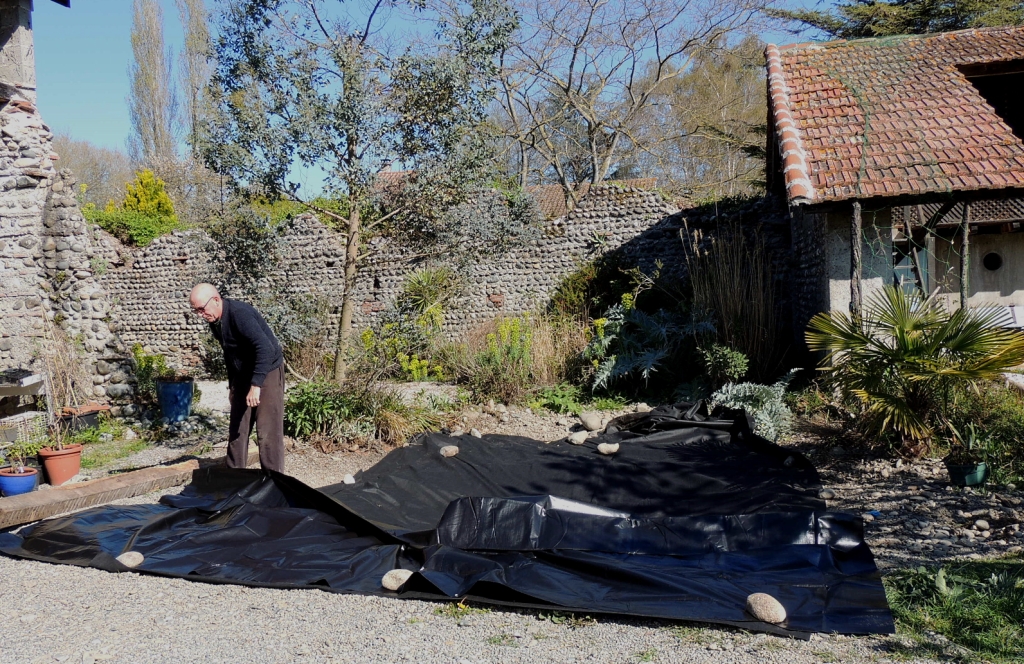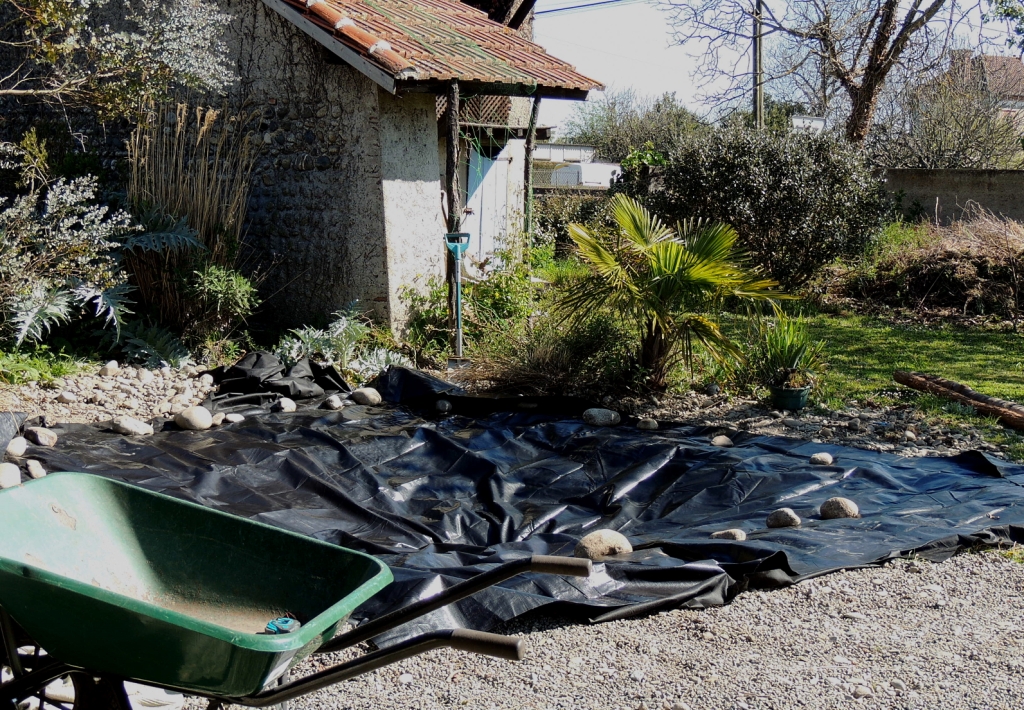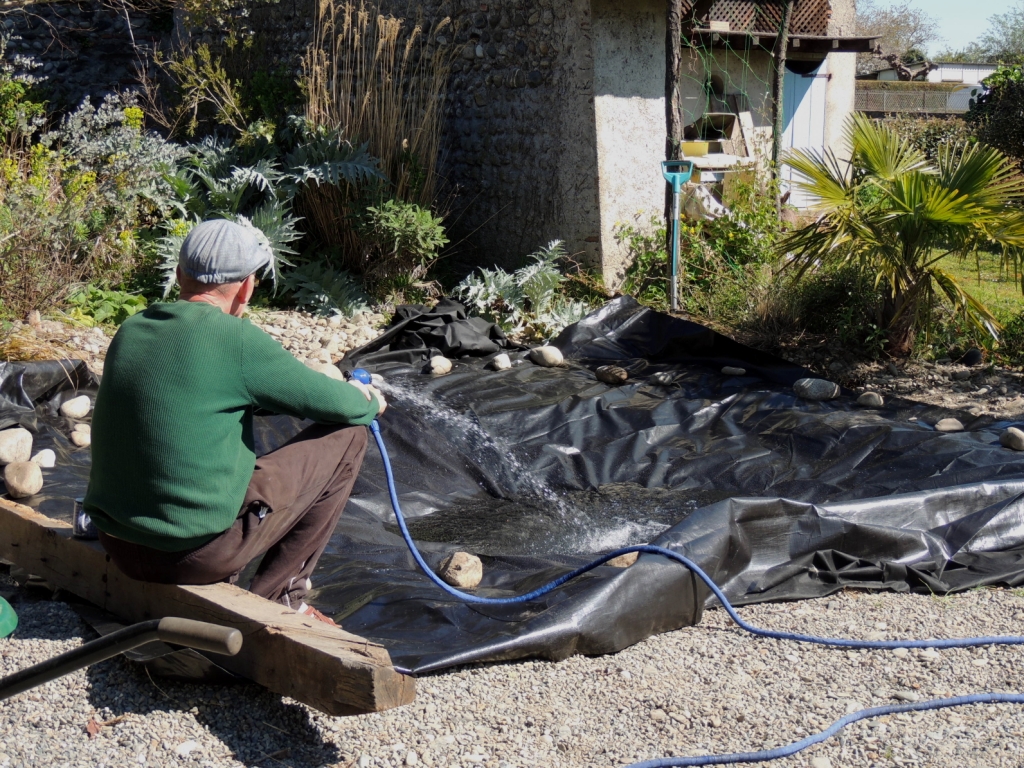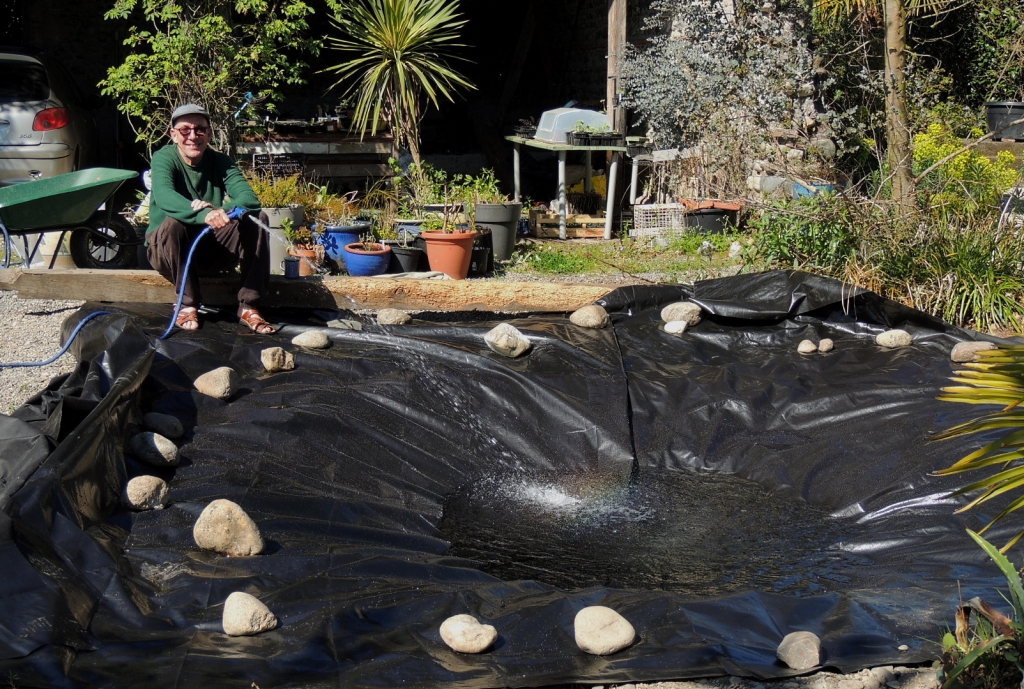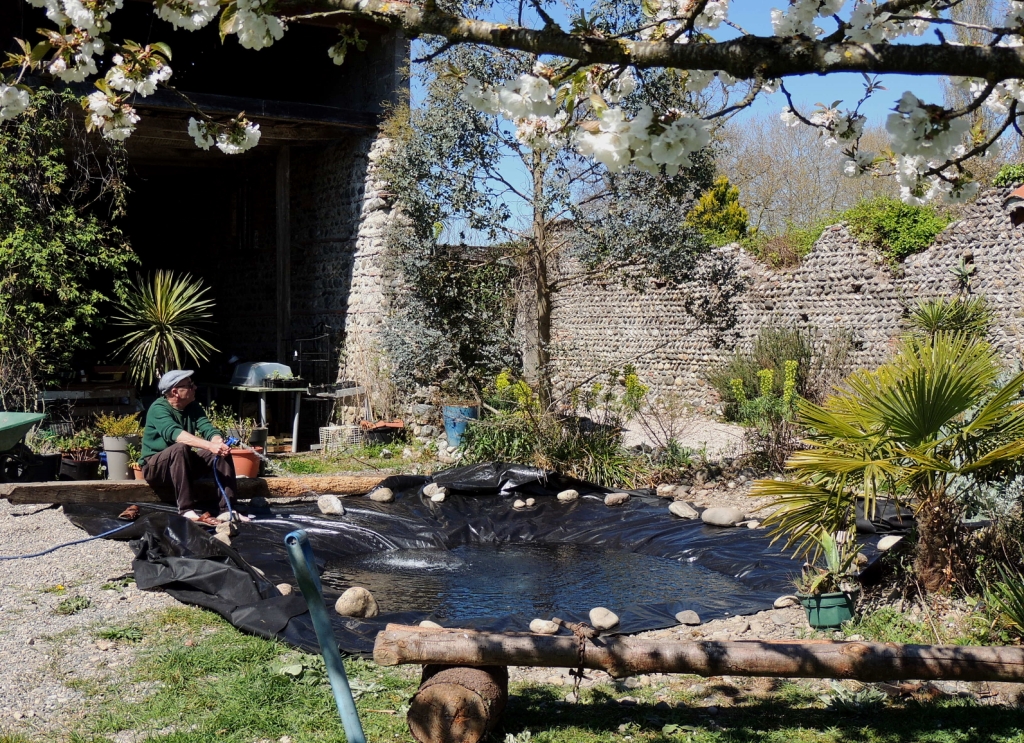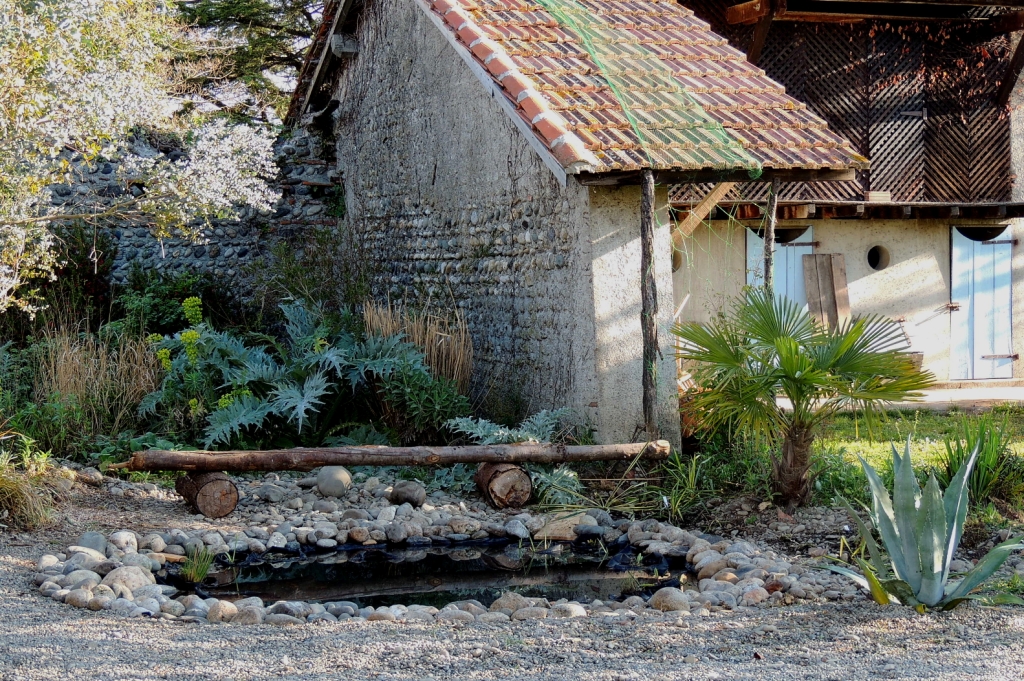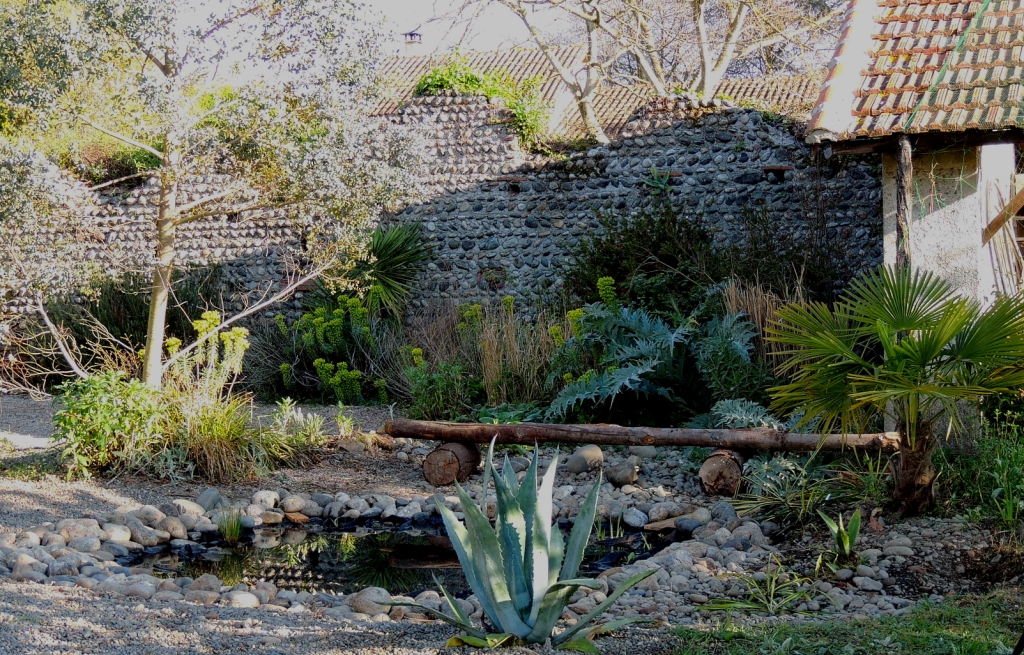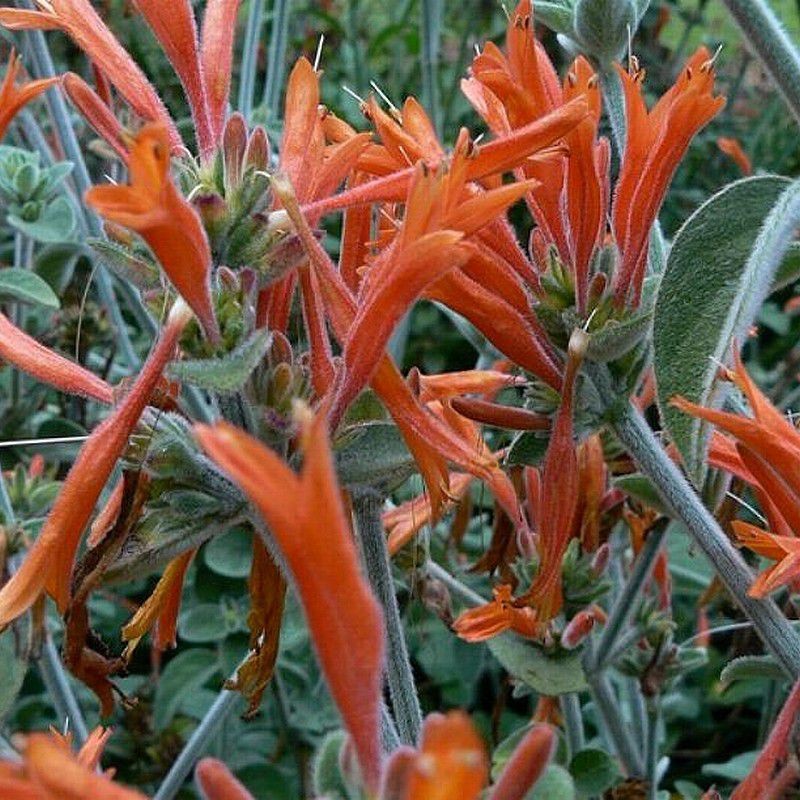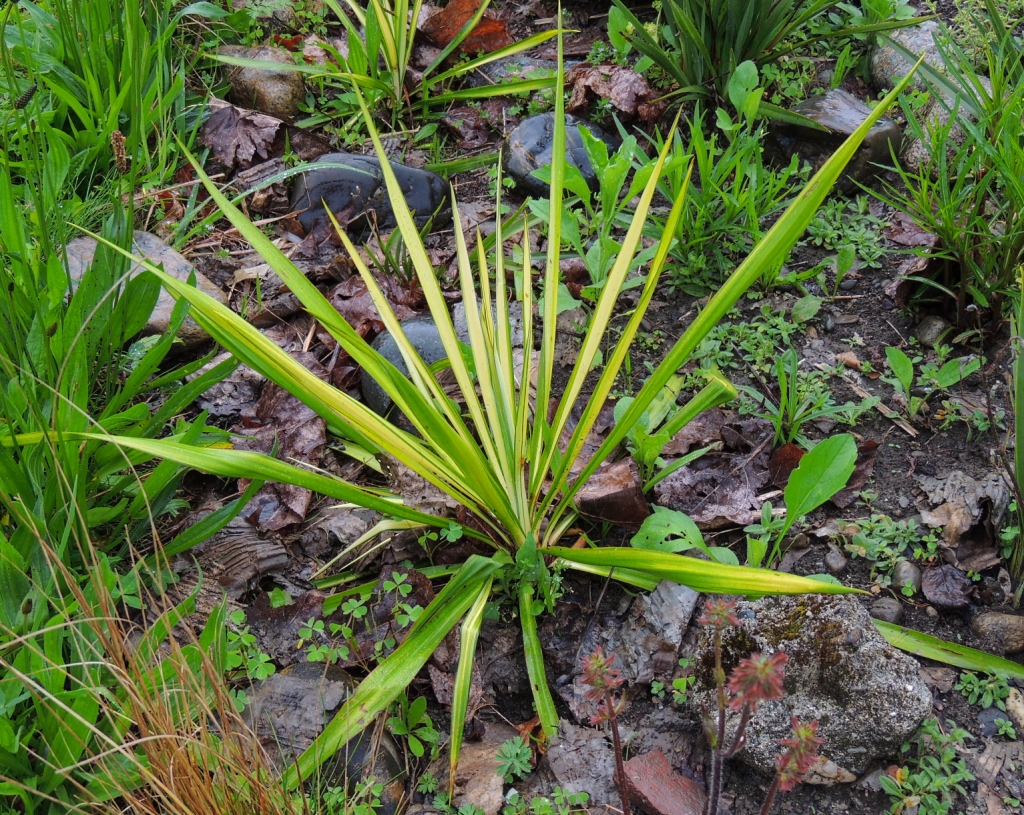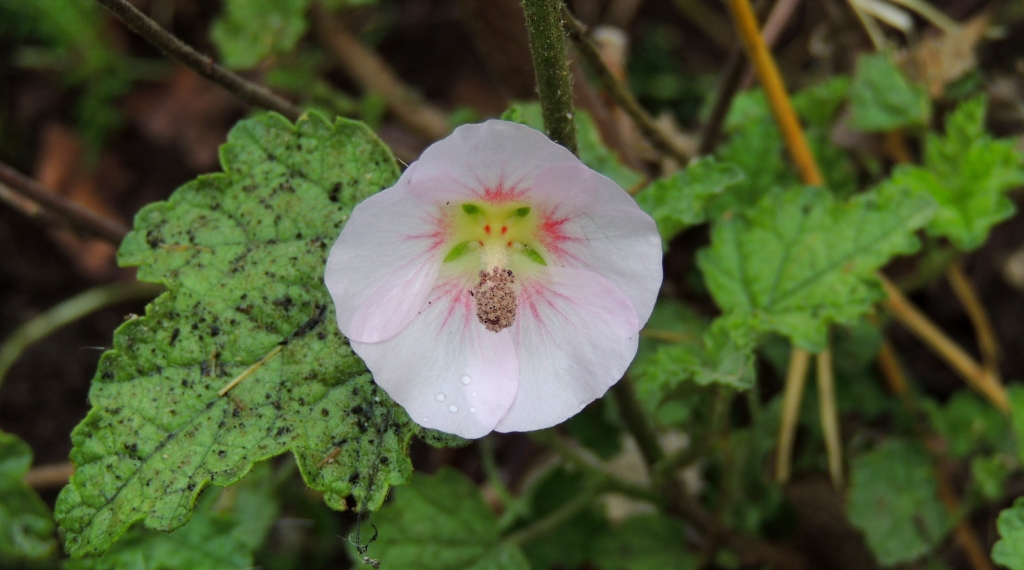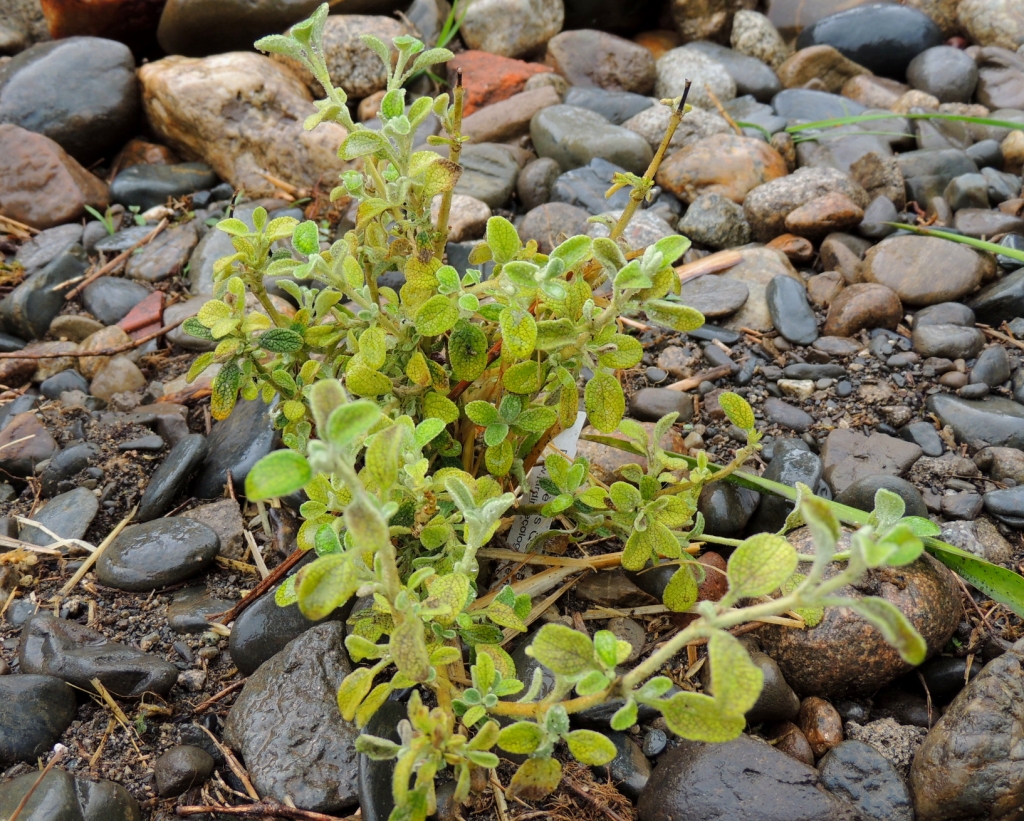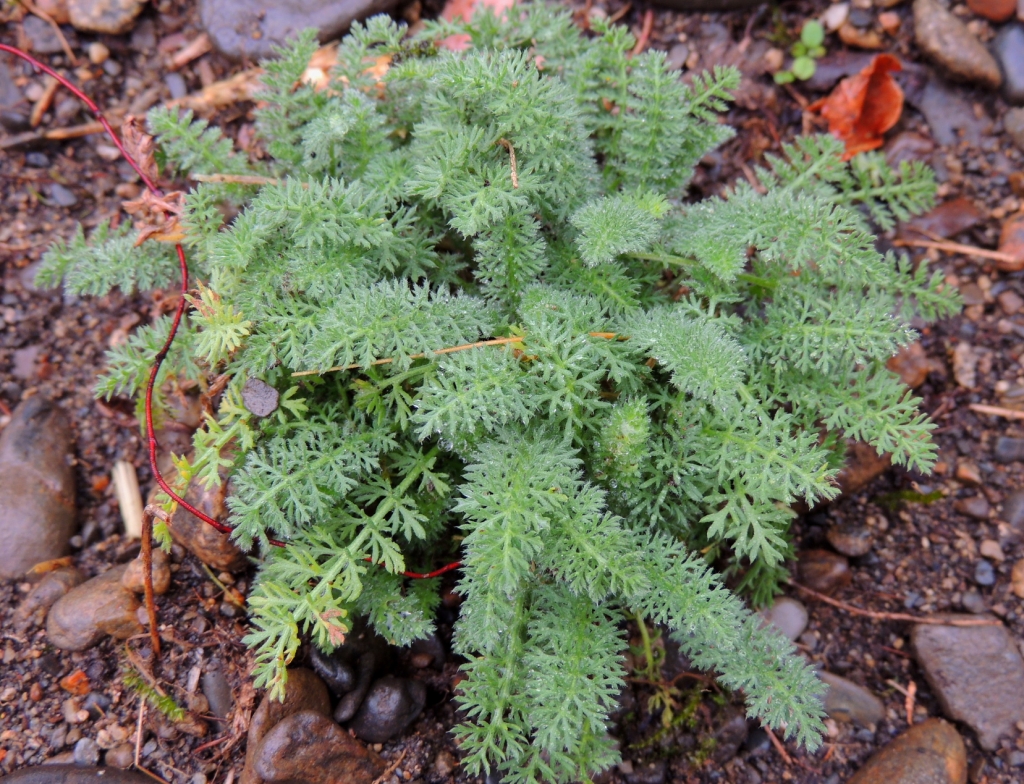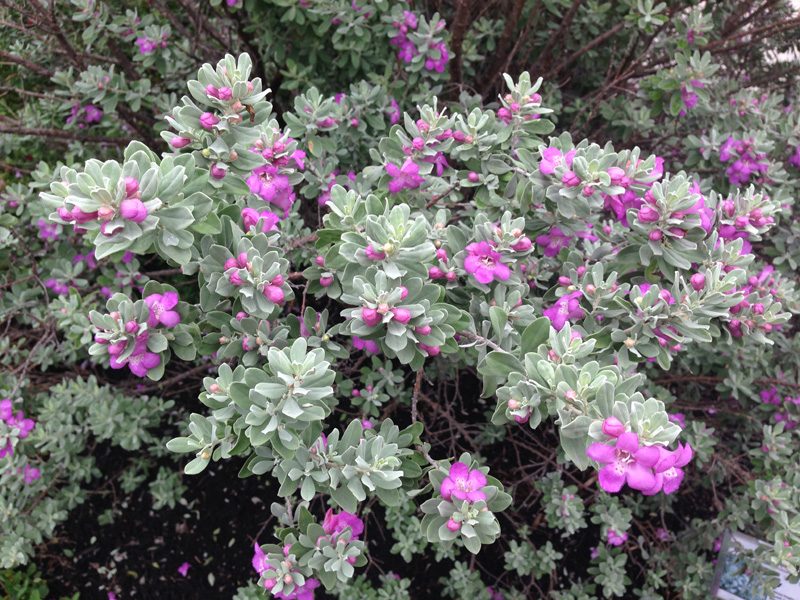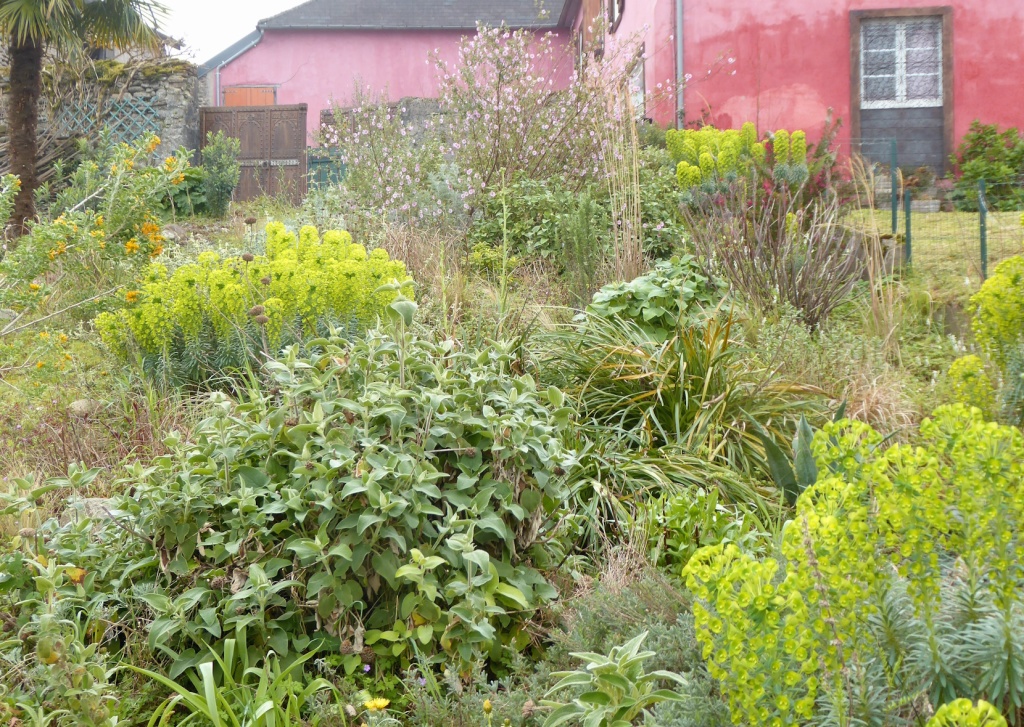
The first time we saw our house before we bought it, three and a half years ago, the front garden, which is separated from the house by a small lane, was a sight. It was a steepish slope, covered in rocks and debris, masses of bramble and bindweed, perched on the hill, overlooked from below and to the sides by other houses. To the right of the rocky slope, looking down, there was tufty grass, saplings growing everywhere, several trees that had moved in, three nutbushes that were aiming for global tree status, and two very unloved cherry trees. But it spoke to me. And as we loved the house as well, the garden, ha ha, came too.
Today was a misty day. So I took some photographs, because a garrigue garden is really hard to photograph in the sun. Too much light bleaches out the slender twigs of the plants, rubs out the soft greens of the shrubs and makes it look like a bad soup. So for the amateur, with one camera, a misty day gives you a fighting chance.
So this seemed pre-destined, to tell you the story of the Garrigue garden, and to try to describe it better than I have done before. I wrote an article for the Mediterannean Garden Society journal in 2022 which sums up in detail the approach that I took to tackling the slope and the rest. I have a link here to my own draft copy as the journal is not available online. So this is the continuation of that story, inspired by this misty day.
The top photograph looks up the slope to our house, you can’t quite see the small lane. So I planted Anisodontea capensis, which flowers all year round, a Cornus Mas which is still too small to see from below and a range of Phlomis, which I brought from Tostat as whole plants or cuttings, and they have all done brilliantly in three years. This is the moment for the Euphorbias too, and they are just beginning to self-seed so I will need to do some removal. The Phlomis are all named in the MGS article. Generally, the plants have all bulked up to fill the space, some may be, in a purist sense, too close to one another but I am not bothered at the moment. I love the undulation of the shapes and have learnt to just ignore the odd tuft of scrubby grass that pops up between.

This is a more elegant view because it looks across to the now still tufty, but mowed occastionally, rough grass, which I think, moreorless accidentally, frames the garrigue part really well. The Agave is about a metre and a bit tall and wide, with several babies surrounding it. Despite the exposed situation, it copes really well because of the brilliant drainage of the stony slope. We took out all the saplings and extra trees and Andy has been gradually pruning the old trees to give them back the ‘a bird can fly through’ look. I have ringed one of them with plants, and as a bonus, Andy planted some of last year’s spring bulbs, which have given it a Maynards wine gums sort of look. I love that bench just there in the distance and am often to be found there with a cuppa in my hand. And Molly the dog too.

Here is the brilliance of the Achillea groundcover that I rave about. It has made the bottom of the slope a verdant pasture. Achillea crithmifolia is a star. The Stachys byzantina you can see in the foreground is ‘Big Ears’, the tripod is supporting Rosa x odorata ‘Mutabilis’, next to it is Medicargo arborea with the yellow flowers, and a nicely sturdy Grevillea rosmarinifolia is flowering red by the wall.


I have used black plastic sheeting a lot to help get started, and there is one last patch that needs lifting. Not pretty but it does help although it needs one growing season to be worth it. I love Photinia serratifolia ‘Crunchy’ which you see, with the copper coloured new growth, to the side of the photo. I have three in a triangle half way down the slope, making a nice break with the garrigue.

Looking more Homes and Gardens here! To finish the story, thus far, I have lost many plants here, it’s a complex environment to work with, the differing effects of the sun on the slope, the stoniness varies, and there are always ‘hidden bombs’ of huge galet rocks deep under the surface of the ‘soil’- and there is not much ‘soil’ either. And I never water, apart from on planting in. As you move sideways to the grassier part, the soil is better and the rocks decrease, but not entirely. So, for example, an Indigofera heterantha that I planted three years ago, has died back twice, and is only this year beginning to make growth. But I love what survives!
And this is the last post before Rabat!









